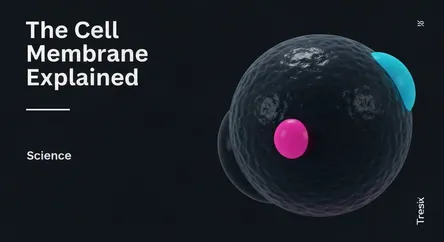Science
The Cell Membrane Explained

Discover the cell membrane, the vital barrier protecting cells. Learn about its structure, function, and critical role in health and disease.
What is it?
The cell membrane, also known as the plasma membrane, is the essential outer boundary of a cell. It acts as a selective gatekeeper, separating the cell's internal environment from the outside world. This remarkable structure is composed of a fluid, double layer of lipids called the phospholipid bilayer, with various proteins embedded within it. These proteins act as channels, pumps, and receptors, controlling the movement of ions, nutrients, and waste products across the membrane. This selective permeability is crucial for maintaining the precise internal conditions necessary for life.
Why is it trending?
Research into the cell membrane is constantly evolving, making it a hot topic in biology and medicine. Scientists are exploring its role in diseases and developing novel drug delivery systems that can target specific cells by interacting with their membranes. New imaging technologies are providing unprecedented views of its dynamic structure and function. Furthermore, understanding the membrane is key to fields like synthetic biology, where scientists aim to create artificial cells, and in immunology, as it's the first point of contact for pathogens like viruses.
How does it affect people?
A healthy cell membrane is fundamental to human health. Its proper functioning is essential for nerve communication, muscle contraction, and nutrient absorption. When membrane proteins malfunction, it can lead to serious diseases like cystic fibrosis, where a faulty channel protein disrupts ion balance. Many medicines are designed to target specific proteins on the cell surface to treat conditions ranging from high blood pressure to allergies. Essentially, the integrity and function of our cell membranes are directly linked to our overall well-being and response to medical treatments.